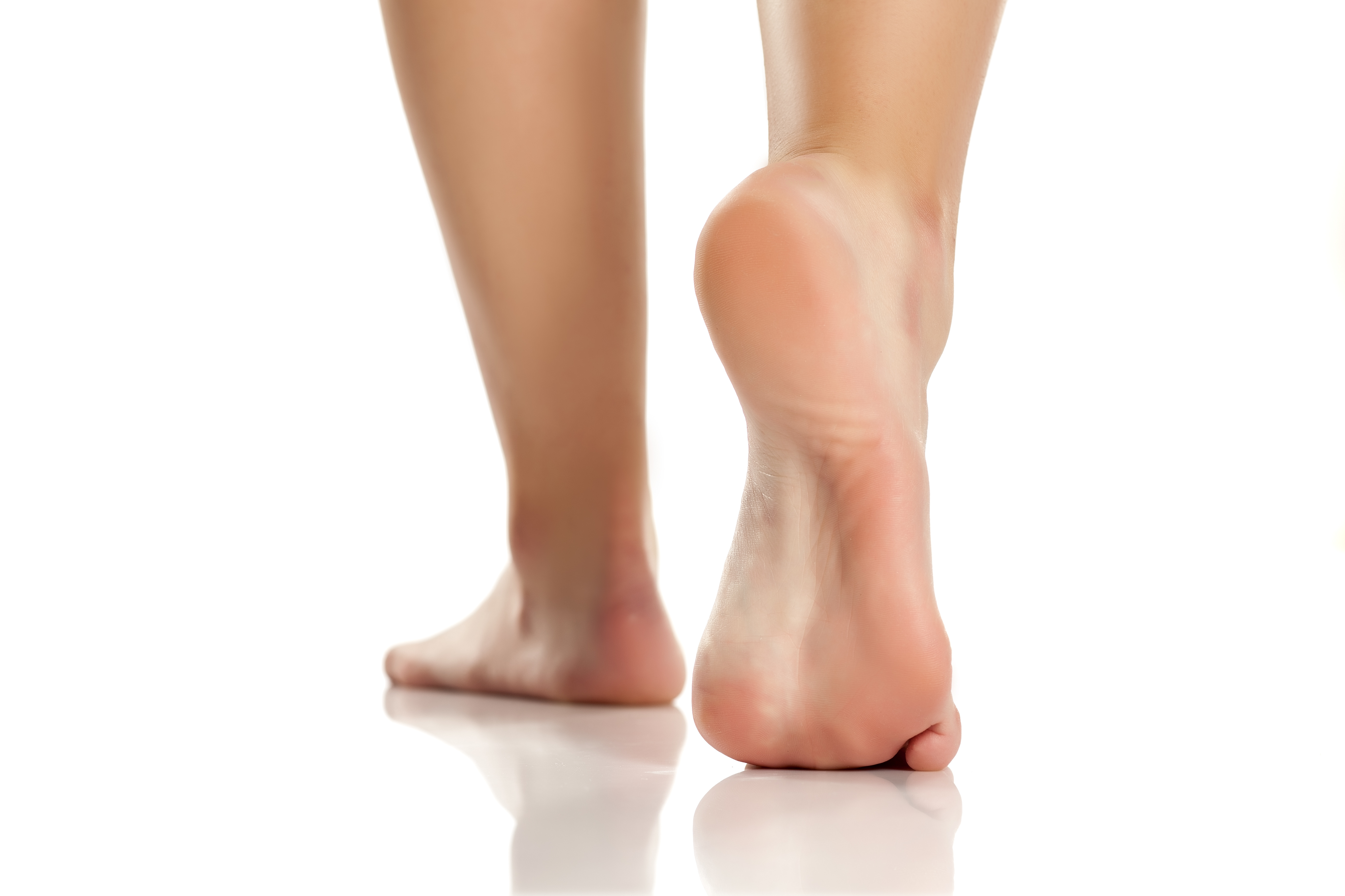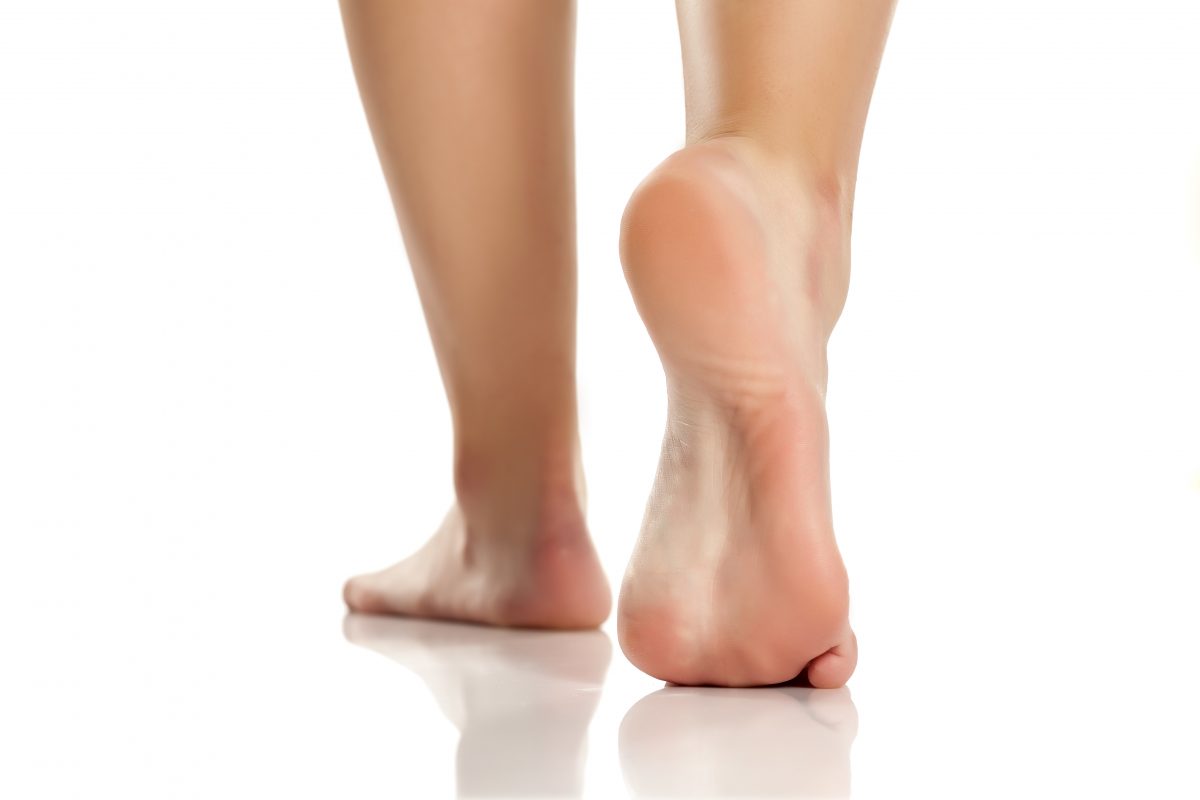Running barefoot changes the running mechanics. This can be advantageous in case of knee problems. But it is important to allow yourself enough time for the adjustment.
 Author: Dr. med. Roberto Llano, Specialist for General Internal Medicine FMH, Sports Medicine SGSM, Head of Medicine Medbase Bern Westside
Author: Dr. med. Roberto Llano, Specialist for General Internal Medicine FMH, Sports Medicine SGSM, Head of Medicine Medbase Bern Westside
In childhood barefoot walking was common practice in summer. Adults, on the other hand, hardly do it anymore. And the runners are divided: For some runners barefoot running is almost like a religion, for others it is totally frowned upon. Both sides have good arguments – but there is little scientific proof. What is certain, however, is that the biomechanics of barefoot running are significantly different from those that are used when wearing shoes. Various studies have shown this.
With shoes, the runner becomes a backfoot runner. This means that the runner places the foot on the heel and rolls over the entire foot. In barefoot running, on the other hand, the midfoot touches the ground first and then rolls a little over the forefoot. The front part of the foot is angled less upwards (dorsiflexion) and the knees are stretched less. This shortens the stride length.

When running barefoot, the foot skeleton absorbs more shocks, so that the transmission of force upwards is less than when the heel lands first. This reduces the load on joints such as the patellofemoral joint, where the kneecap glides along the thigh bone. For runners with kneecap problems, such as osteoarthritis, barefoot walking can therefore be an option. The same applies to back pain.
However, the two biggest advantages of barefoot running are that it trains the foot muscles and trains perception for the underground. Many people use their eyes to orient themselves when walking and running. The feeling for the situation in the room, on the other hand, often withers because it is trained too little. You notice how much, for example, when you try to walk on a line painted on the floor with your eyes closed. At the latest, however, when your eyesight deteriorates with age, a good sense of the ground is all the more important. Barefoot walking trains this perception for the position of the feet in space.
It also offers advantages in other respects, as various typical runner injuries occur less frequently for barefoot runners. These include, for example, inflammation of the sole of the foot fascia (plantar fasciitis), iliotibial syndrome with pain on the outside of the knee or hip and problems with the muscles on the back of the thigh (hamstrings).
To conclude from this that barefoot walking is generally better would be wrong. For example, it causes more problems with the Achilles tendon, the calf muscles and it also leads more frequently to injuries to the sole of the foot. However, barefoot walking per se is not more unhygienic than walking in shoes, as long as you wash your feet afterwards.
If you want to start running barefoot, you are well advised to proceed gently and slowly. Because every experienced runner has a well-established running pattern that cannot be changed overnight. As mentioned, both the foot mechanics and the foot muscles change when running barefoot – and that takes months. Over time, the soles of the feet also become more resistant and can endure an amazing amount. In the beginning, the feet quickly become hot when walking barefoot. You can feel every muscle. This is a good sign. And at the same time the signal to stop. Because it should not become more, in order not to overload the feet. If you expect too much of yourself, you risk a stress fracture of the metatarsal bone in extreme cases. A good idea is to cover only a short part of the usual distance barefoot at the beginning and gradually cover an ever longer part. Or to do the running drills barefoot, but then put on the training shoes again.
Whether barefoot running brings faster times in competition is an open question. There were some competitive athletes who competed barefoot. As a rule, however, you run the fastest with the technique you have learned.
A compromise between running barefoot or in shoes is minimal or “barefoot” shoes, of which there are now many models. As far as running mechanics are concerned, they stand between both types of running. However, the exercise profile is similar to that of normal training shoes. But the same applies to miniature shoes: Give your feet time to change!

Tips:
- Walking barefoot is healthy. However, barefoot walking should only be done on suitable ground, for example in the forest. Asphalt or other hard surfaces are unsuitable.
- Running barefoot is not per se more unhygienic than running in shoes. However, injuries to the soles of the feet are more common. Therefore, wash your feet well afterwards and pay attention to good foot care. Daily checks for injuries are important. With the right training, however, the sole of the foot adapts surprisingly well and becomes much more resistant.
- If you are used to walking barefoot, you can also do this in winter. As long as you run, your feet are well supplied with blood. It is not advisable to run over ice plates or go for a barefoot mountain hike.
- People with diabetes or sensory disorders on their feet (neuropathy) should not walk barefoot. They feel any injuries or overexertion less well. Diabetes can also affect the immune system and blood circulation, so small wounds can quickly become stubborn ulcers.
- For special foot shapes (e.g. hollow foot), consult a specialist beforehand. If at all, then only very slowly change over to barefoot walking.


